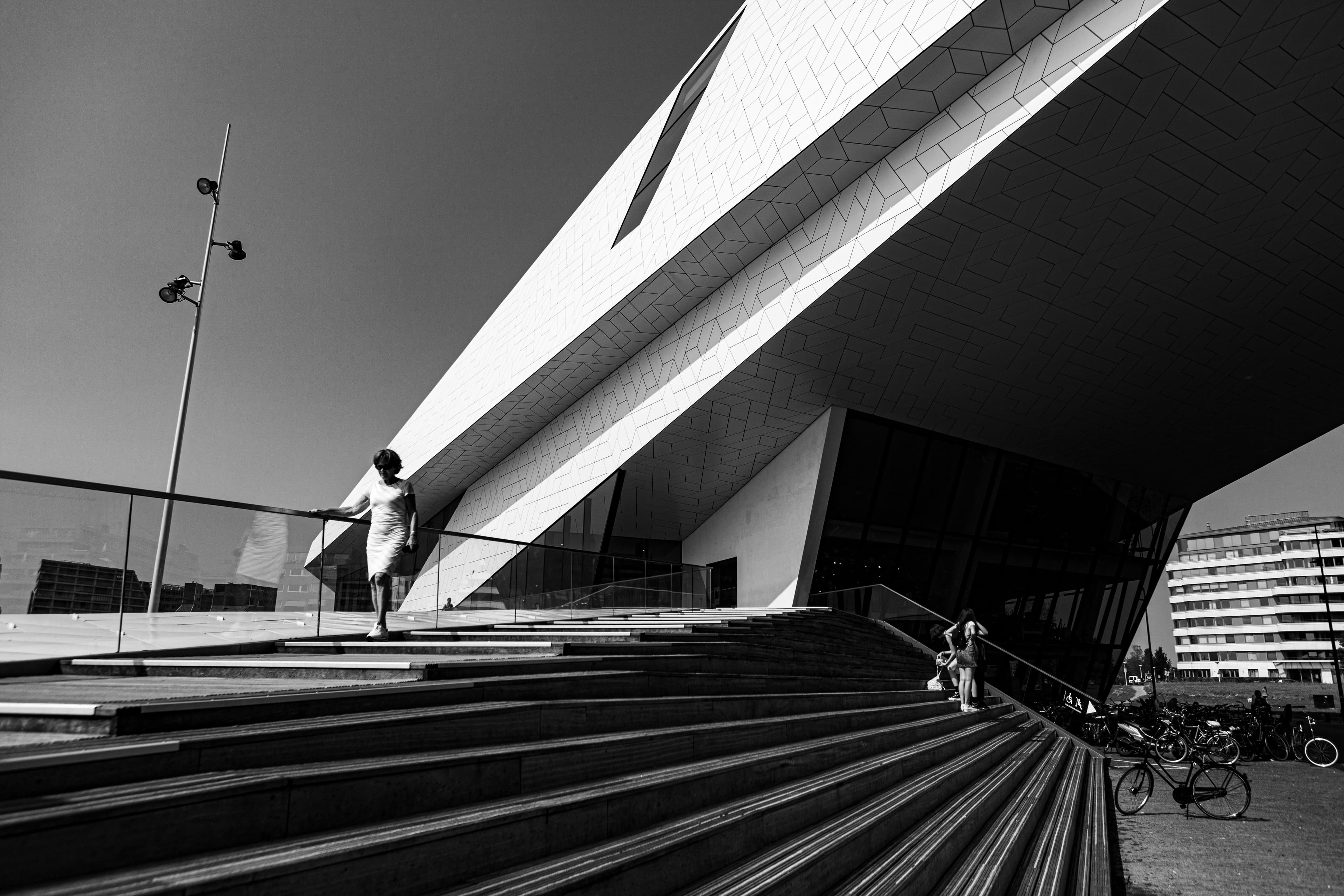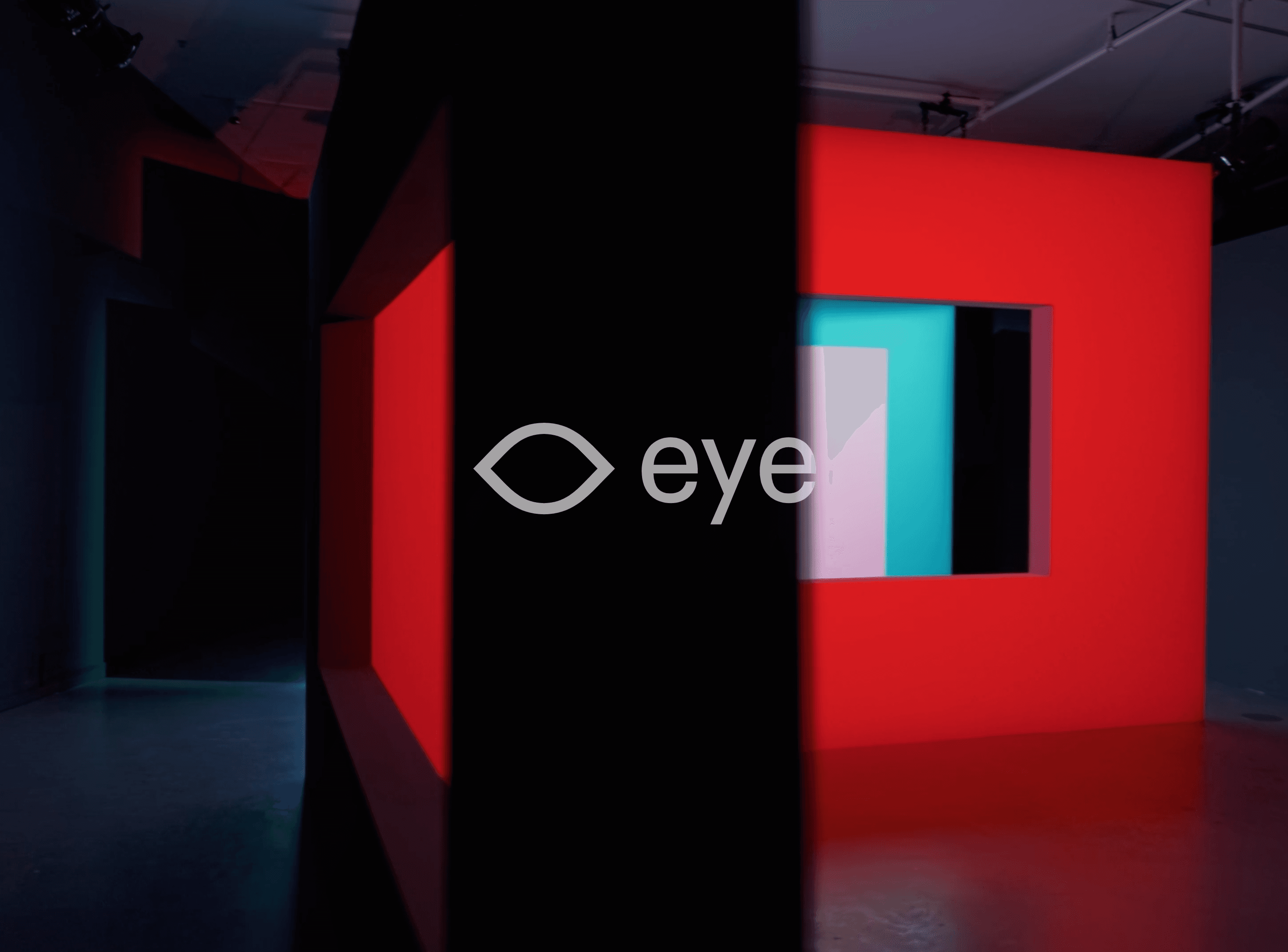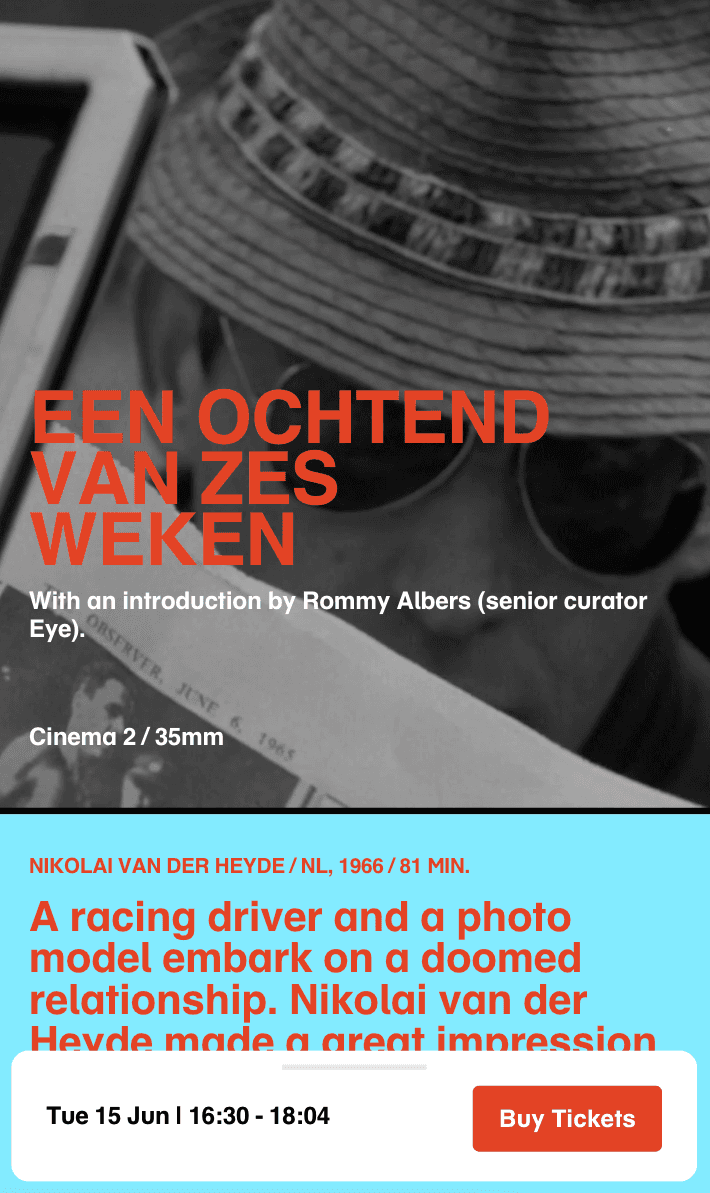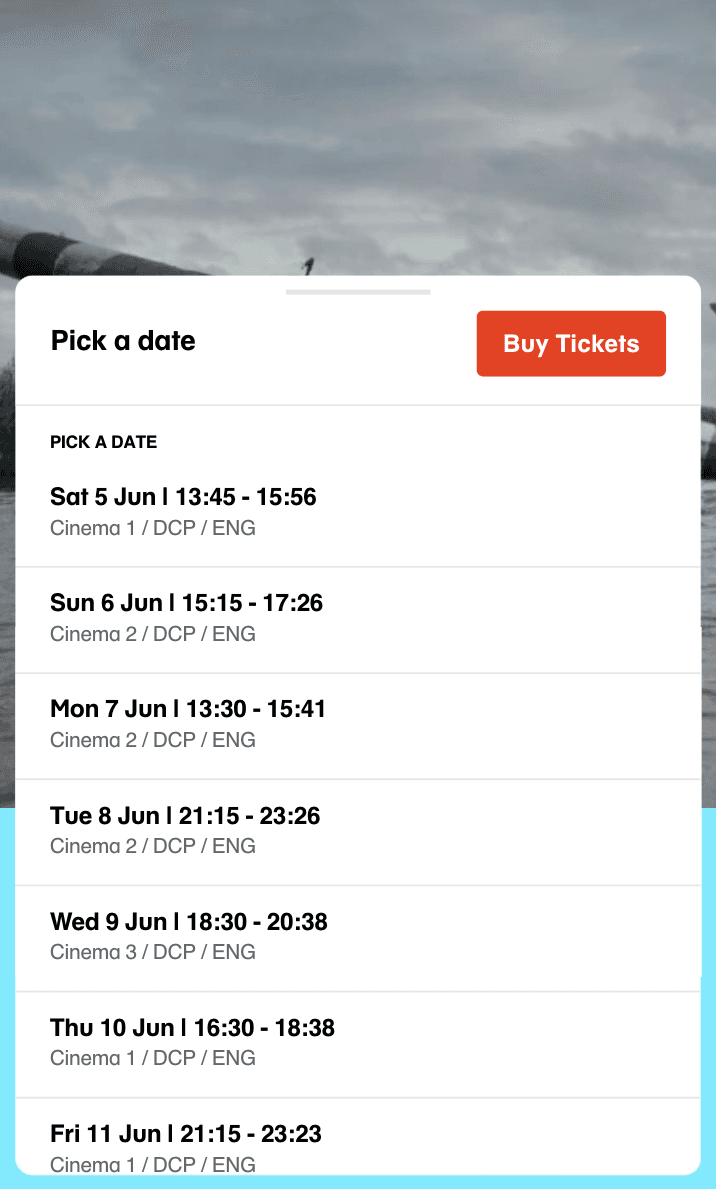Eye Filmmuseum
The client: an iconic Amsterdam museum
Amsterdam has about 50 museums, but Eye is one of the most instantly recognizable. Its striking white building, perched on the IJ across from Central Station, is a landmark in its own right. As I write this, they’re preparing to host Queen Máxima for their 75th anniversary.
But Eye is more than a museum. It’s a cultural center, cinema, restaurant, research institute, and exhibition space. Every day, digital and analog films are screened. Behind the scenes, their collection center holds over 50,000 titles, along with posters, equipment, and ephemera. Eye plays a vital role in preserving Dutch film heritage and promoting cinema at home and abroad.

Entrance to Eye. Photo by Huub Zeeman.
The project: a new website
The initial trigger was technical: Drupal 7 was reaching end-of-life. But the real opportunity was strategic. A site rebuild invites the kind of institutional introspection normally reserved for 5-year plans or change-of-leadership cycles.
Eye could have simply ported the existing site to a modern framework. Instead, they used the moment to rethink workflows, team structures, and how the institution presented itself to the world. The website isn’t the heart of the museum – that role belongs to the building itself – but unlike architecture, digital infrastructure can be restructured. And in this case, it needed to be.
The real challenge was shifting from a broad digital transformation trajectory into something more focused: delivering a coherent product.

The challenge: multiple audiences, one homepage
The old homepage tried to be everything to everyone. It was structured around departments, not audiences. Content was hard to find, and even basic tasks like checking what was playing that day were buried. Internally, teams felt their work was invisible. Marketing flagged a lack of urgency and differentiation: why should someone go to Eye today? And why Eye, rather than a regular cinema?
Instead of trying to satisfy every stakeholder with a consensus-driven patchwork, we worked with the design team on a radical shift. The new homepage prioritized exhibitions first, then film programming via a tightly designed agenda. Navigation was reimagined from the ground up to reflect actual user journeys. We emphasized landing pages, anticipating that most visitors arrive via search, not the front door.
The homepage became a clean, two-paneled design:
The first panel showcased curated highlights: exhibitions, special film programs, conferences.
The second showed a structured daily agenda: scan-friendly, detailed, and one click away.
Typography was restrained, content anchored to a left-aligned reading line. This made dense information easier to scan without flattening it.
Screenings with Q&As or interviews were highlighted.
Flexible landing pages gave space to departments like education, collections, research, and the restaurant.
SEO strategy shifted away from assuming the homepage as the sole point of entry.
My role: from developer to product lead
I started as lead developer, joining early workshops to map the goals, constraints, and internal systems. My initial responsibility was to define a technical strategy that could accommodate Eye’s sprawling organizational structure: collections, programming, education, research, exhibitions, and more.
As the project evolved, I stepped into the role of product manager. That meant coordinating across multiple teams -- content, tech, design, and programming -- each with its own logic and priorities. I briefed external agencies, ran selection rounds, wrote documentation, and gave regular presentations to staff across the entire organization to maintain alignment and momentum.
I also led the effort to deliver a coherent omnichannel agenda: one schedule powering the website, the ticket desk (balie), and narrowcasting displays, all pulling from a shared system.
My job was to keep the product vision clear, communicable, and deliverable, from first sketch to final launch.


Approach: integrate, don't reinvent
Eye’s programming is rich and idiosyncratic. Each film listing includes not just metadata -- directors, cast, stills, trailers, format, subtitles -- but also hand-written editorial notes contextualizing that showing within a specific program. If the same film appears in two different series, it gets two different write-ups. The archive is a treasure trove.
Each film page pulls data from multiple systems:
Ticketing (used by the website, the balie, and narrowcasting screens)
Programming databases (with structured metadata)
The CMS (where editors enrich pages with text, images, and related content)
One of the key architectural challenges was cleanly separating those concerns, ensuring editorial freedom while maintaining structural clarity and performance. We didn’t try to jam everything into the CMS. Instead, we built pipelines where human input could layer onto automated data without friction.